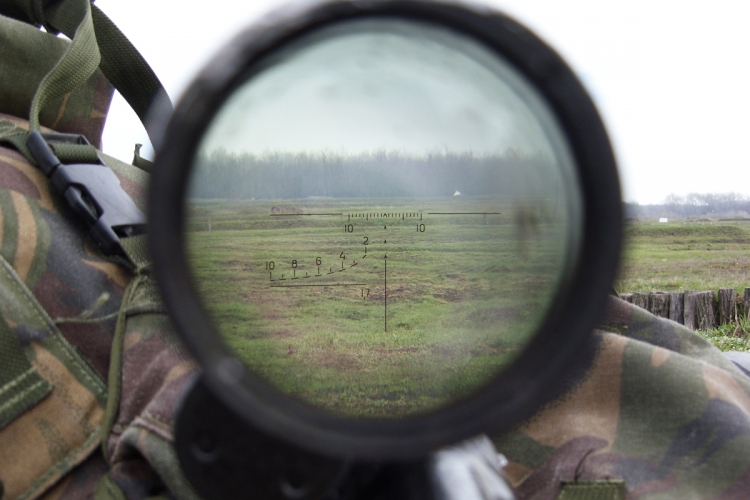In June 2017, Armenia’s armed forces 3,883 times violated the ceasefire in various directions along the line of contact between Armenian and Azerbaijani troops, according to the results of the APA’s calculations based on the reports confirmed by the Azerbaijani Defense Ministry.

Armenians were using large-caliber machine guns, 60-, 82- and 120-mm mortars and grenade launchers while shelling the Azerbaijani army positions.
In June, the Azerbaijani army positions in the districts of Aghdam“>Aghdam, Fuzuli“>Fuzuli, Jabrayil“>Jabrayil, Tartar, Khojavand“>Khojavand, Goranboy, Gazakh, Gadabay, Tovuz, Goygol and Agstafa were shelled from the Armenian army positions.
Last month, Armenian Armed Forces continuously commit provocations on the confrontation line of Armenian and Azerbaijani troops in Nagorno Karabakh. The enemy shelled the Azerbaijani army positions and settlements along the frontline from large-caliber weapons and artillery.
Due to the resolute retaliatory measures, 6 Armenian servicemen were eliminated and some others were wounded on June 15 and 16.
A reconnaissance and sabotage group of the Armenian Armed Forces attempted to cross the line of defense of the Azerbaijani Armed Forces on the contact line between the two countries’ troops on June 20 evening.
As a result of the timely measures taken by the Azerbaijani army, the Armenian reconnaissance and sabotage group suffered losses and had to retreat. One member of the Armenian reconnaissance and sabotage group Zaver Hovanis Karapetyan, born in 1974, was captured by the Azerbaijani armed forces.
On June 15, Azerbaijani Armed Forces soldier Sultan Shahvaladov was killed fighting to repel an Armenian provocation.
Azerbaijani armed forces destroyed a protected command-and-observation post, as well as optical devices on an observation tower of the Armenian army on the contact line.
The Azerbaijani Armed Forces destroyed an unmanned aerial vehicle (UAV) belonging to Armenia’s Armed Forces on June 21 evening, while attempting to carry out reconnaissance flights over the Azerbaijani army positions.
The Nagorno-Karabakh conflict entered its modern phase when the Armenian SRR made territorial claims against the Azerbaijani SSR in 1988.
A fierce war broke out between Azerbaijan and Armenia over the Nagorno-Karabakh region of Azerbaijan. As a result of the war, Armenian armed forces occupied some 20 percent of Azerbaijani territory which includes Nagorno-Karabakh and seven adjacent districts (Lachin, Kalbajar, Aghdam, Fuzuli, Jabrayil, Gubadli and Zangilan), and over a million Azerbaijanis became refugees and internally displaced people.
The military operations finally came to an end when Azerbaijan and Armenia signed a ceasefire agreement in Bishkek in 1994.
Dealing with the settlement of the Nagorno-Karabakh conflict is the OSCEMinsk Group, which was created after the meeting of the CSCE (OSCE after the Budapest summit held in Dec.1994) Ministerial Council in Helsinki on 24 March 1992. The Group’s members include Azerbaijan, Armenia, Russia, the United States, France, Italy, Germany, Turkey, Belarus, Finland and Sweden.
Besides, the OSCE Minsk Group has a co-chairmanship institution, comprised of Russian, the US and French co-chairs, which began operating in 1996.
Resolutions 822, 853, 874 and 884 of the UN Security Council, which were passed in short intervals in 1993, and other resolutions adopted by the UN General Assembly, PACE, OSCE, OIC, and other organizations require Armenia to unconditionally withdraw its troops from Nagorno-Karabakh.










 Inauguration ceremony of President of Azerbaijan Ilham Aliyev was held
Inauguration ceremony of President of Azerbaijan Ilham Aliyev was held Ilham Aliyev wins presidential election with 92.05 percent of votes VIDEO
Ilham Aliyev wins presidential election with 92.05 percent of votes VIDEO President Ilham Aliyev, First Lady Mehriban Aliyeva and family members voted in Khankendi VIDEO
President Ilham Aliyev, First Lady Mehriban Aliyeva and family members voted in Khankendi VIDEO Plenary session of 6th Summit of Conference on Interaction and Confidence Building Measures in Asia gets underway in Astana. President Ilham Aliyev attends the plenary session VIDEO
Plenary session of 6th Summit of Conference on Interaction and Confidence Building Measures in Asia gets underway in Astana. President Ilham Aliyev attends the plenary session VIDEO President Ilham Aliyev was interviewed by Azerbaijani TV channels in Prague VIDEO
President Ilham Aliyev was interviewed by Azerbaijani TV channels in Prague VIDEO














